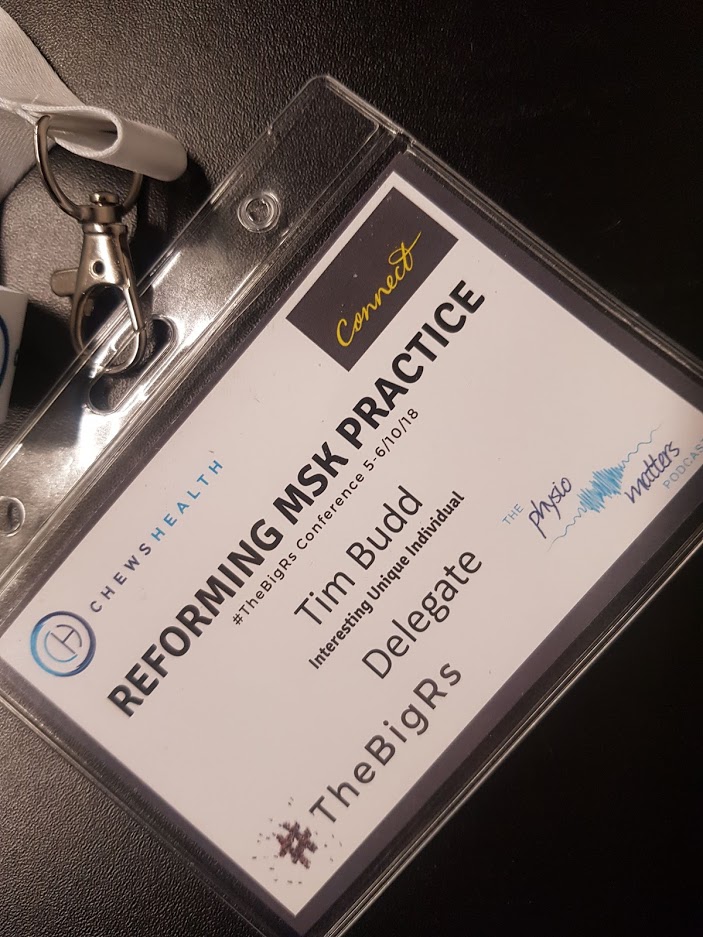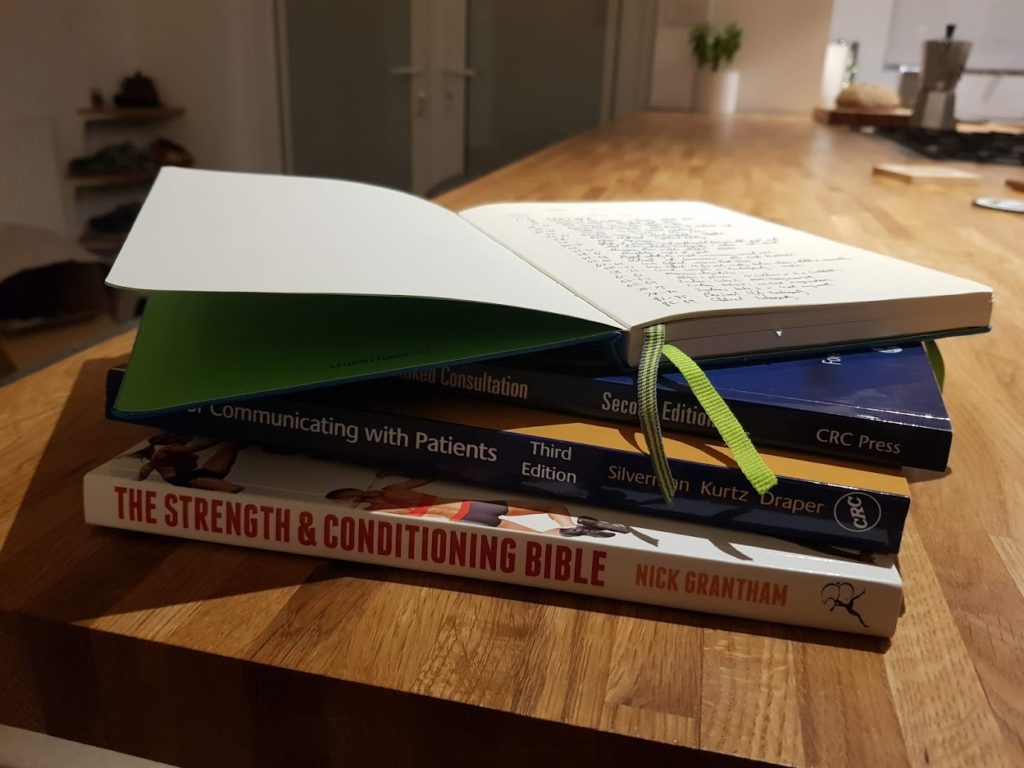What is CPD?
As you may or may not know, CPD stands for Continual Professional Development. It is a core principle of many professions, especially within the healthcare sphere. As a physio I am expected to keep my current levels of knowledge up to date, but also to continue diversifying my knowledge throughout my career. This can take the form of courses, reading, listening to podcasts, teaching, being involved with exams etc. The key is making sure that what I learn goes on to benefit my practice and the people I treat, and also- keeping a record of it all. There is always the potential for being audited by the HCPC. If improving my own practice isn’t a good enough reason to stay up to date, then the sword of Damocles of the HCPC is!
Last year -courses
I spent a fair amount of time listening to podcasts and reading some pretty interesting books and papers which furthered my knowledge on a whole range of subjects throughout physiotherapy. The bigger things that spent a good while learning and assimilating were courses. The first was an online Tendinopathy course presented by Dr Peter Malliaras. He is a fantastically well read physio with some excellent research to his name. The course was instrumental in consolidating my understanding of the basis of various types of tendinopathy within different tendons, and specifics in ways to start and progress rehabilitation.

The main course I went on was with Neil Langridge and Matt Low who presented a weekend on Spinal Manipulation with specific reference to Clinical Reasoning. It was an excellent couple of days with a lot of theory, a mass of debunking and a whole load of hands on work. I have copious amount of notes and worksheets from this course and it has really come into its own, both with better clinical reasoning as well as practical and theoretical knowledge of manipulation.
The main thing that this course directed me to was communication with patients and improving myself in that direction, so the latter part of the year was spent in the company of a number of excellent books on that topic.
The most recent course I went on was a conference looking at Clinical Reasoning within Manual Physiotherapy (are you seeing a pattern here?!) and the future of where we are going as a profession. This was less a chance to think about specific techniques as it was to start directing me into new areas of thought in terms of efficacy within the profession. Physiotherapy is indeed a science, but it is also Art. what happens when they collide? Lots of interesting questions and directions.

Looking ahead – courses
This year I have yet to decide on exactly which direction I am going to take myself from a clinical learning perspective. There is certainly no way I would ever think to say that I know all there is to know about a joint/injury etc. That way lies hubris, and certain failure! That being said, I am very interested in looking at the lower limb and the hip complex at the moment, partially because of an injury/issue I had in 2017-18. If I can improve my knowledge of pathologies, rehab specifics and masking symptoms then I will certainly have advanced my knowledge. There is a great course that I have been recommended to go on on the hip and groin presented by Dr Alison Grimaldi – but unfortunately I have just found out that the only course in the UK this year has already sold out. I do have a couple of other back up plans for other courses with equally well read tutors, based around the hip complex. I just need to make sure that the courses don’t clash with any big races I have planned, or are in ridiculously far flung places that are a nightmare to get to…. There is always the option of sleeping in the van, though!
Looking ahead – books
My book reading will continue in much the same vein as how last year ended – looking into books about patient communication. I still have a couple on my list which I have yet to start. From there I am really interested in looking into more pain science, there are some excellent resources out there which have just been published which I am keen to get my hands on. Above and beyond that, there are some excellent physios out there who do some sterling work in climbing and running rehabilitation, so I am looking at getting into some interesting conversations with them about how they do things and, perhaps more importantly – why. Continuing to make our profession live up to the science part of physiotherapy, while reconciling it as an “art” is going to be key to how it is seen in the coming few years.





